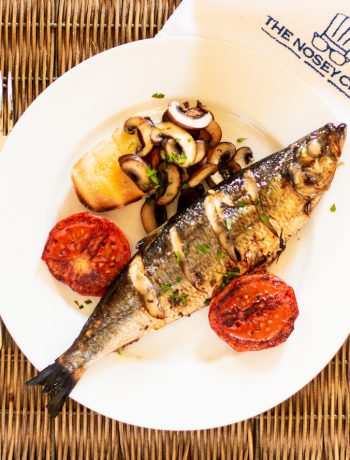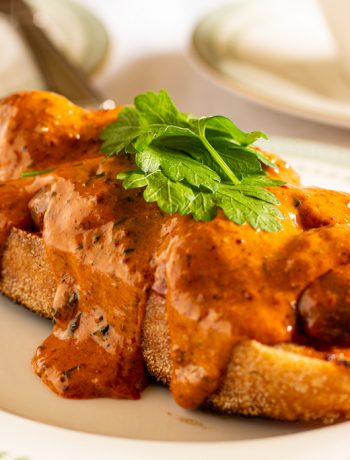Making croissants at home is insane.
If you are going try to make them, just stop. You are about to invest hours of time, multiple chill and freeze steps, and a biblical quantity to butter to an enterprise that will deliver you six sub-standard pastries that will last for exactly 8 hours before they have to go in the bin. If you need convincing, then watch Alex French Guy Cooking expend TWELVE YouTube videos trying to make one breakfast. Even Gordon Ramsay, who trained in Paris had never made a croissant until he visited the city much later for his TV show The F Word (see video below).
Making croissants is best left to patisserie pros.
Do. Not. Make. Croissants.
However, we are nosey cooks, and the history of croissants is very fascinating indeed. First of all, croissants are not French. Despite their unbreakable bond with the breakfast tables of Paris, croissants are from Vienna, where they are derived from a 13th Century product called a ‘kipfel,‘ which is common in central Europe. In the 17th Century, the pastry process for kipfel was gradually modified to create a much lighter product of laminated layers of pastry. This was the croissant.
The central story in the history of the croissant is the 1683 Battle of Vienna. Back in the 17th Century, the Ottoman Empire was dead set on capturing Vienna. On 7 July 1683, some 40,000 Tatar troops camped outside Vienna and set up a siege.

Once the siege was in its third month, the Turks were getting frustrated, so they started digging tunnels and sending sappers in to blow up the city walls from beneath. It is said that the Viennese bakers were making kipfel and heard the Turks tunnelling under the city. They alerted the military and the city was saved. The people celebrated the defeat of the Turks by eating pastries shaped into crescents – the religious symbol of Islam.
That is a great story, but it is probably complete bollocks.
In various versions of the tale, the a date switches from 1683 to 1686 and 732BC; and the location flips between Tours, Vienna and Buda. Nobody alive at the time of any of these events every wrote the story down. Therefore, in historical parlance, the tale of croissants and the Ottoman siege of Vienna (or Buda) can be considered ‘apocryphal.’
Croissants have a shelf-life problem. Once made, they are at their best for about a day, and no more. A day-old croissant is hard if left out, and soft if stored in a box. They are fickle things that do not respect the effort that goes into making them. Refusing to be defeated by their own pastry, French patissiers have come up with a couple or more ways of using up old croissants and continuing to sell them the next day. Chief among these is the almond croissant, or ‘croissants aux amandes.’ Here, old croissants are given a new lease of life by halving them, filling them with frangipane and baking them for a second time. Making them is a doddle, and way easier than trying to bake the original product from scratch.
Croissants aux amandes
Ingredients
- For the basic frangipane:
- 100g unsalted butter softened
- 100g caster sugar
- 2 eggs
- 100g ground almonds
- 1 tsp vanilla extract
- Squeeze of lemon
- For the pastry:
- 4 day-old croissants
- 2 tbsp simple syrup (50/50 v/v sugar dissolved in water)
- Handful of flaked almonds
- Icing sugar to dust
Instructions
Heat an oven to 160˚C.
To make the frangipane:
Cream the butter and sugar with an electric whisk. Beat in eggs one at a time. Stir in nuts and flavourings. Squeeze in some lemon to taste.
To assemble and cook:
Slice the croissants in two and spread with frangipane line a sandwich. Close them up and place them on a baking tray.
Brush the croissants with the syrup and sprinkle over with the flaked almonds.
Bake in the oven for 15–20 mins taking care not to burn the nuts.
Dust with icing sugar to serve.






1 Comment
Ishuse & den søde tands ingredienser - Christianshavnernet
24/12/2022 at 3:18 pm[…] Tørrede frugter som figner, svedsker, dadler & kandiserede frugter er brugte ingredienser i mange Provence desserter, brugt sammen med mandler, nougat. Hvem elsker ikke en Croissant d’Amande. […]